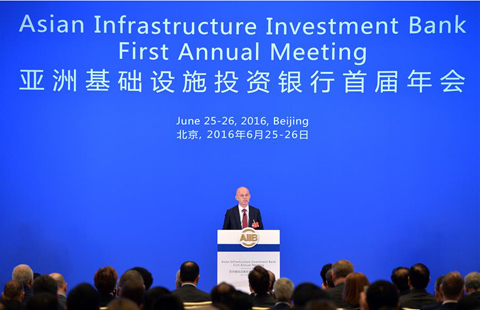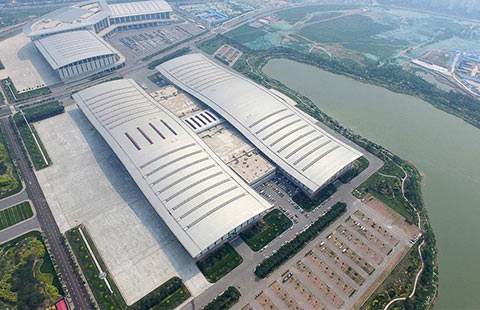Tapping market forces
By Chi Fulin (China Daily) Updated: 2012-06-14 08:10
Change of the government-dominated growth model will help sustain long-term healthy development
Today, China's transition and reform have come to a new turning point. One that calls for an urgent strategic change in the orientation of market-oriented reforms to march toward an equitable and sustainable market economy.
The key to making this change is the government-dominated growth model. The problem is that this growth pattern excessively relies on administrative forces, limiting the role of the market, pursuing expansion of the size of the economy, and ignoring equitable and sustainable development. Without changing the government dominance, it is difficult to give full play to the basic role of the market in the allocation of resources and to change the growth model, so it focuses on consumption not investment.
A consumption-led economic transformation requires changing the government dominance. Unlike in Europe and the United States, China's potential consumption demand is huge, which will enable its economy to maintain a rapid rate of growth for a long period. We estimate that consumption in China will soar from 16 trillion yuan ($2.5 trillion) in 2011 to 50 trillion yuan in 2020. This will be a solid basis for China's economy to grow at the rate of 8 percent in the next 10-20 years. However, to release this huge potential demand depends not only on policy readjustment but also on market institutional arrangements and optimization of the market environment. Why has this consumption potential not been adequately released while the economy has been rapidly growing in the past 10 years? In the years between 2000 and 2010, the final consumption rate fell from 62.3 percent to 47.4 percent and residents' consumption rate dropped from 46.4 percent to 33.8 percent. The root cause for this paradox is that the government-dominated growth mode has become a strong force pulling the national economy along a track of investment-led growth that has led to an unbalanced national income distribution pattern adversely affecting residents' consumption capacity.
Meanwhile, the government-dominated economic growth mode inclines to the development of heavy and chemical industries and restricts the development of service sectors, thus the supply structure cannot meet the requirements of rapid growth of the social demand for public goods and public services, which has increased the problems of imbalance, incoherence and unsustainability in China's development. All this calls for a change in the government-dominated economic growth model and a push for consumption-led rather than investment-led growth.
Readjusting and optimizing the investment structure requires changing the government dominance of the market. China has both huge potential consumption demand and tremendous investment demand. In the next 10 years, China's urbanization may well grow by 10-20 percent. In the short run, investment is important for maintaining economic growth. In the long run, only by complying with changes in the structure of social demand, can investment be translated into real consumption, thus becoming an endogenous driving force for economic growth. This requires combining investment with the consumption-led economic transformation. The transformation of the economic structure and optimization of the investment structure are products of the effective role of market mechanisms, not the results of administrative intervention.
The problem now is that the government-dominated growth mode relies too much on investment, is too dependent on the consumption of resources and energy, and inclines too much to heavy and chemical industries, which has distorted the investment structure and failed to meet the changes in the structure of social demand. This government-led investment growth mainly depends on administrative forces and is not sustainable. It is imperative to orient investment to changes in the structure of social demand and make better use of market mechanisms to optimize the investment structure in order to lay a good foundation for the move toward consumption- driven growth in the long run and to contribute to maintaining economic growth in the short run.
The government-dominated growth mode allows administrative power to allocate resources, leading to low efficiency and serious waste. The prices of factors such as land, capital, labor and other factors are artificially kept low, which objectively stimulates investment impulse and curbs consumption. This lingering situation has weakened the role of the market, resulting in market-oriented reform lagging behind.
The experience of the past 30 years has shown no other mechanisms, including the government, can replace market forces as the core factor for driving economic growth. To change the government dominance means not to replace the government with the market but rather to bring into full play the basic role of the market in allocating resources in order to prevent and correct "government failures".
Orienting the second round of market-oriented reform 30 years after the start of reform and opening-up to equitable and sustainable development is a more significantly era-making endeavor. It is more challenging, calls for greater efforts and needs a much longer period of time than the establishment of a market economic system.
The author is the president of China Institute for Reform and Development.
- No big Brexit worries for now
- Visitors try at exploration zone on Summer Davos Forum in China's Tianjin
- China's Alipay could take stake in Germany's Wirecard: report
- AIIB makes quick rise to global prominence
- China Vanke says shareholders seek to oust chairman, 11 directors
- Baosteel, Wuhan Steel announce restructuring plans
- Digital strategies are no tall order
- Brexit brings pains and gains for different groups


















